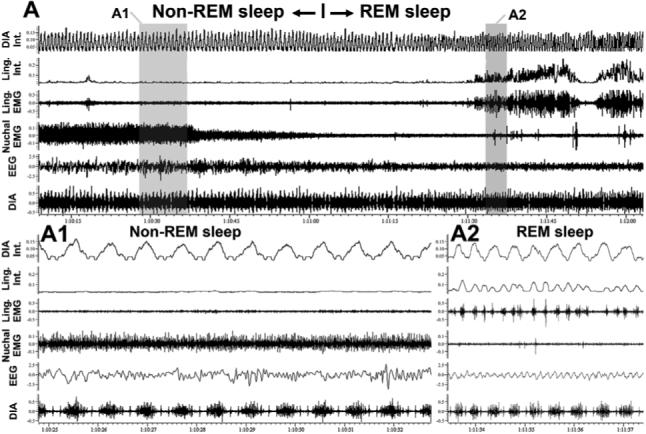Fig. 3.

Muscles of the tongue exhibit non-respiratory, rhythmic activity during REM sleep. The top panel shows a continuous, about 2 min-long, record centered around a transition from non-REM to REM sleep in an adult rat. The signals are: diaphragmatic (DIA) and lingual (Ling.) EMGs and their integrated (Int.) versions, nuchal EMG and cortical EEG. The bottom panels show the highlighted segments of the top record on an expanded time scale. A1: there is no activity in the lingual EMG during non-REM sleep. A2: soon after the onset of REM sleep, lingual muscles begin exhibiting rhythmic activity with a rhythm much faster than the respiratory rate, as indicated by the recording from the diaphragm (unpublished data from Lu and Kubin, 2007). We relate the consistent appearance of fast rhythmic activity in lingual muscles during REM sleep to the possibility that, at least in an altricial species like the rat, such a rhythm may represent suckling-like activity.
